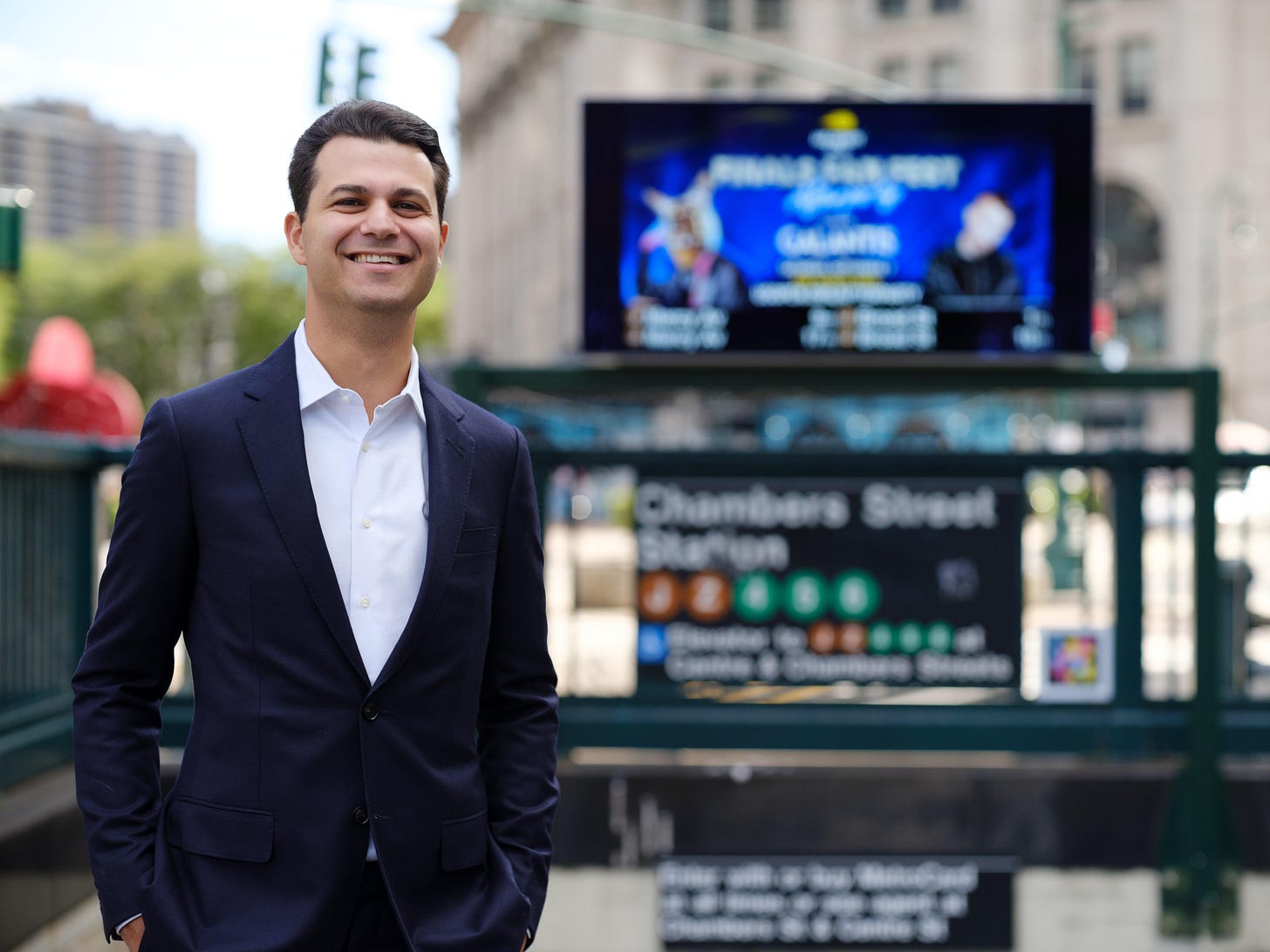2025 City Council Election: Jess Coleman's Candidate Statement
Today's statement is from Jess Coleman, who is running for the District 1 City Council seat currently held by Council Member Christopher Marte.
This op-ed is part of East of the Bowery's 2025 City Council Democratic primary coverage, where candidates answer: "What specific policy goals will your office achieve within 4 years to improve the Lower East Side?"
Today's statement is from Jess Coleman, who is running to be District 1 City Council member. District 1 covers most of Manhattan south of Houston Street, including the Lower East Side, Chinatown, Soho, Tribeca, Fidi, Battery Park City, and Governor’s Island.
Jess Coleman: The Lower East Side Deserves A Comeback
The Lower East Side sits at the forefront of the challenges facing our district. You can see it in the empty storefronts that stay vacant for years. In the families doubling up in too-small apartments because they can’t afford to move. In the noise and chaos of streets designed for cars instead of people.
Across Lower Manhattan, we rank first in pedestrian deaths, last in affordable housing production, and first in vacant retail space. But those numbers only confirm what residents already know: our neighborhoods are being neglected—and too many of our elected officials have chosen to defend the status quo instead of fixing it.
Housing is the clearest example. We’re in the middle of a historic housing shortage, and nowhere is the pressure more acute than in Lower Manhattan. Demand to live here is sky-high. We’re close to jobs, transit, culture, and schools. But instead of making room for more people, the city has allowed the housing supply to stagnate—driving up prices and pushing longtime residents out.
The reason is simple: building in New York is still too hard. Our zoning code makes it easier to build parking than housing. New developments are routinely blocked or watered down by local politicians. And office buildings sit half-empty while tens of thousands of New Yorkers sleep in shelters or on the street.
We need to remove parking mandates that waste valuable space. We need to expand legal housing near transit in every borough. And we need to make office-to-residential conversions fast, simple, and widespread. City of Yes moved us in the right direction—but a one-time zoning tweak isn’t enough. We need a full break from the political mindset that treats new housing as a threat, not a necessity.
But solving the housing crisis alone won’t bring the Lower East Side back to life. Our streets feel crowded and uninviting. Parks go weeks without basic upkeep. The honking, idling, and congestion drown out any sense of community.
We can change that, too. Congestion pricing is already starting to work—cutting crashes, reducing travel times, and lowering noise across Lower Manhattan. But instead of building on that success, local leaders run and hide, content with placating a loud minority rather than defending a policy that has been an across-the-board victory for our community. We need to stand up to the Trump Administration, protect congestion pricing and reinvest the revenue in long-overdue improvements here at home, starting with making the Delancey Street and East Broadway stations finally accessible.
We should also be expanding outdoor dining and Open Streets—not pulling them back. These programs help small businesses thrive, make our blocks more lively and welcoming, and give residents a reason to linger and connect. When done right, they’re what makes a neighborhood feel like home.
At the same time, we need to treat public space as a public good. I’ll fight to fully fund the Parks Department and create dedicated Public Space Teams for neighborhoods like the Lower East Side—crews tasked with maintaining and improving places like the Allen Street Malls, Seward Park, and Sara D. Roosevelt Park. These aren’t just amenities. For many residents, especially in dense parts of the city, these are our front yards, our gathering places, our community anchors.
And we can’t talk about public space without talking about safety. Right now, too many people don’t feel safe riding the subway or walking home at night. And too many of our neighbors are stuck sleeping on the street, with no real path toward stability.
We need a smarter, more compassionate approach to homelessness—starting with housing. A housing-first strategy means meeting people where they are and giving them a permanent place to live, supported by outreach teams that don’t just displace people, but connect them to what they need: housing vouchers, inpatient care, job training, and more.
We also need better planning around public safety. Too many officers are stationed without clear strategy—clustered in a few high-profile areas or just standing around. We need smarter, more responsive deployment, especially in the subway system, where riders deserve a consistent, active presence and a plan that’s built around safety, not optics.
The Lower East Side isn’t broken beyond repair. It’s just been ignored. And that neglect shows up in the slow erosion of what made this neighborhood special: the community institutions, the affordable homes, the small businesses, the energy and character of the streets.
This neighborhood has always been a proving ground—for immigrants, workers, artists, and organizers. It can be again. But only if we stop letting the same old politics stand in the way.
If you like what you see, you can follow Jess’ work and advocacy on Instagram and his website. Thank you Jess for participating!






I like the cut of this guy's jib.